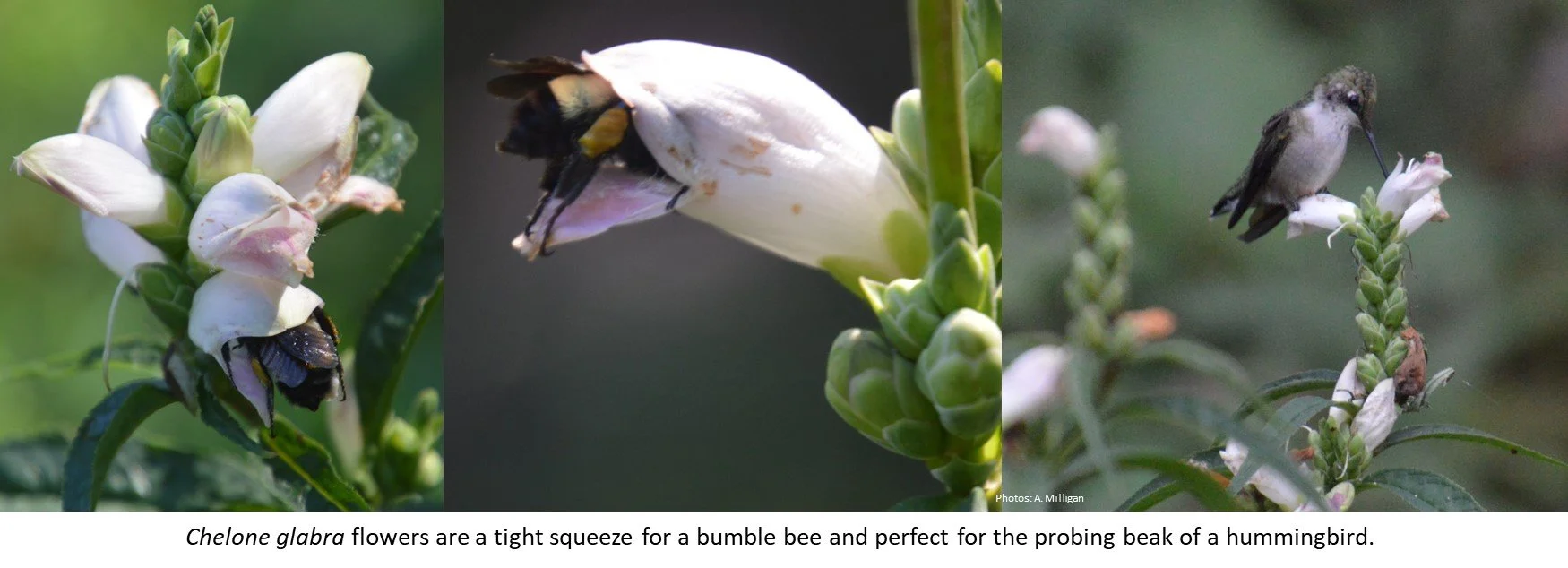Latin for Gardeners
September’s Native Maryland Plant
Chelone glabra L.
(kee-LOH-nee GLAY-bruh)
Common Name: Turtlehead
Why are there so many hummingbirds still visiting my garden in late September when many of my plants are out of bloom? It’s simple, it’s the wonderful Chelone glabra that is helping to keep them here; providing them with nectar as they spend their last days in Maryland before setting off on their long migration south. However, it’s not only hummingbirds that are benefiting from this late-summer to mid-fall blooming plant – its main pollinator is long-tongued bumble bees; bees that are still very active, even as the weather cools. These bees have the necessary strength and tongue needed to pry open the flower and reach both the pollen and the nectar.
Turtlehead is often found along stream banks and riparian areas, places where you might also find turtles. In fact, its common name refers to the flower’s arching upper lip, which overlaps the lower lip like a turtle’s beak.
Turtlehead is an easy plant to identify. It’s clump-forming and has distinct two-lipped flowers that appear on dense spikes. Interestingly, it’s like Penstemon digitalis (June 2023’s native plant), in that it has 4 fertile stamen and an infertile one that is fixed to the bottom of the lower petal.
Although I haven’t seen insect pests on these plants, I do find the plant is susceptible to powdery mildew and I’ve been told that deer may find it irresistible.
If you’re interested in supporting bees in the fall and keeping hummingbirds in your garden for as long as possible, you really should consider planting Chelone glabra.
Alison Milligan – MG/MN 2013
Watershed Steward Class 7/CBLP




